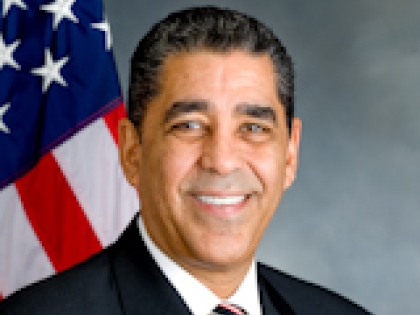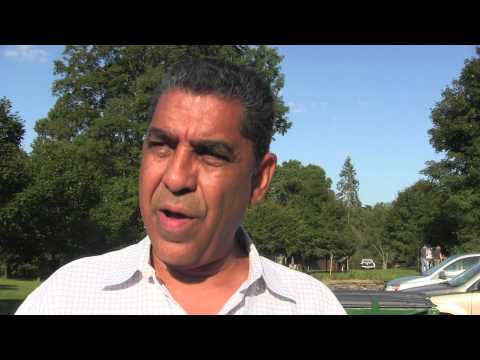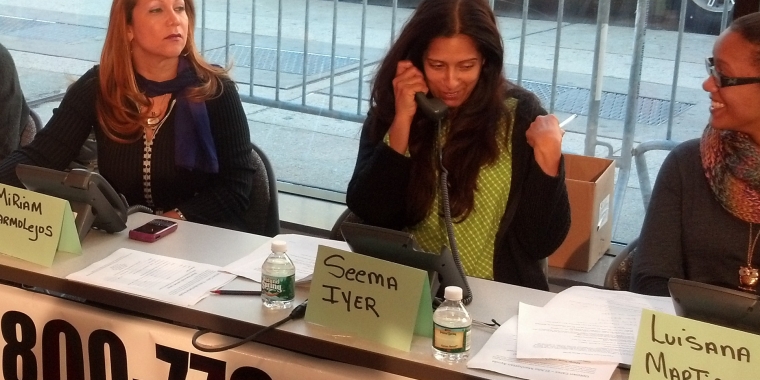
Senator Espaillat Joins Riverkeeper in Unveiling Major Report About Water Quality in Hudson River
Adriano Espaillat
August 9, 2011
-
ISSUE:
- Health
Report highlights trouble areas where sewage contamination is especially bad and recommendations on how to deal with sewage releases in our waters
(New York, NY) – Today, Senator Adriano Espaillat (D – Manhattan/Bronx) joined Riverkeeper, an environmental watchdog organization, in unveiling a major new report that examines water quality in the Hudson River. The report, based on intensive testing over a four year period, makes a compelling case for the need to monitor and clean the Hudson River.
“How is the water?,” the report examining sewage contamination in the Hudson, reveals that water quality in the Hudson River falls below safety standards established by the U.S. Environmental Protection Agency (EPA) 21% of the time. Around the country, beaches fail the EPA standard 7% of the time. The quality of water varies among regions and can change depending on whether conditions are dry or wet.
Senator Adriano Espaillat – whose district includes the Northriver Wastewater sewage plant where a recent fire resulted in the release of nearly 200 million gallons of sewage into the Hudson – called for an immediate end to sewage being released in New York’s waters and pleged to takeup Riverkeeper’s recommendations for improving our water quality. “We must stop sewage from being released in our waters and take the necessariy measures to protect the public from pollution,” said Senator Espaillat, who serves on the Senate Environmental Conserveration Committee.
Recommendations made by Riverkeper include:
- Hudson River counties need to conduct weekly water quality testing at all user areas and develop predictive modeling to forecast water quality to protect public health.
- New York State must adopt a “single sample” standard for evaluating water quality in order to better reflect the spikes in contamination found in the estuary.
- New York State must pass a Sewage Right to Know Law that requires timely public notification of sewage contamination in our waterways, both accidental and chronic.
- Local and state governments must locate contamination sources and prevent sewage from entering the river and its tributaries by investing in wastewater infrastructure.
- Citizens and communities need to identify and solve their local contamination problems by supporting infrastructure upgrades, green infrastructure projects, improved septic field regulations and maintenance, and water conservation.
Riverkeeper’s report outlined the best and worst water quality points in different regions along the Hudson. In New York City, the Gowanus Channel is considered the least safe water quality point, with samples at the “unacceptable” mark 50% of the time, while the Dyckman St. Beach is considered the safest, with samples never at “unacceptable” levels (see graphic for complete list).
Paul Gallay, president and Hudson riverkeeper said: “The recommendations made in Riverkeeper’s report are crucial to improving New York’s water quality. By implementing these recommendations, we can reduce sewage releases into the Hudson River and give New Yorkers the necessary notification to protect them from polluted waters.”
“There is simply nothing more important than protecting New Yorkers’ health and we can start by preserving the quality of our water,” said Senator Espaillat. “Together, we will implement the necessary notificaiton systems, stop the flow of sewage into our waters, and restore New York’s envionrment.”
For more information about Riverkeeper please visit: www.riverkeeper.org. For a direct link to the report, visit www.riverkeeper.org/wp-content/uploads/2011/08/RvK_How-Is-the-Water_2006-10.pdf
###
Share this Article or Press Release
Newsroom
Go to NewsroomUptown Cares! - Sandy Relief Telethon to Help NYC Victims
November 2, 2012
Taking on Hydrofracking; Protecting New York's Environment
October 1, 2012

